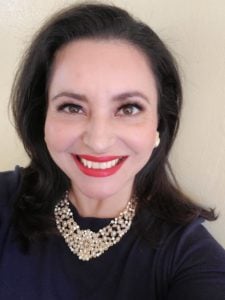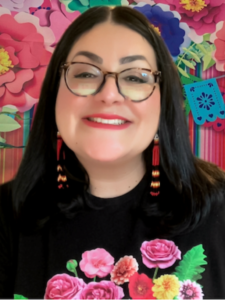In the U.S., Hispanic Heritage Month from Sept. 15 through Oct. 15 celebrates the history, culture, and contributions of Latine and Hispanic Americans. Many of these Americans have ancestors who came to the U.S. from Mexico, the Caribbean, Spain, and Central and South America.
Canada has a similar time of celebration with Latin American Heritage Month in October. During this month, Canadians recognize the rich contributions that Latin American communities have made to the social, political, economic, and cultural makeup of Canada.
Educators at Outschool can join in recognizing and sharing the many ways that Latine and Hispanic Americans and Canadians have influenced their wider communities. If you have the expertise to teach about Latine and Hispanic heritage, it’s an especially great time to do so. We also encourage educators who teach other topics to spotlight Latine and Hispanic changemakers and culture to enrich classes of all kinds.
The term “Hispanic” refers to anyone whose family comes from a Spanish-speaking country while “Latine” describes people from Latin America, including Central America, South America, and some parts of the Caribbean. Hispanic and Latino communities are made up of people of many ethnicities and cultures. Latine (Latinx) is a gender inclusive term that includes and acknowledges members of the Latin American community who identify as queer and non-binary.

We asked educators Patricia Melendez and Dr. Reina Rodriguez, who teach the Spanish language and Latine and Hispanic culture and history on Outschool, how they celebrate Hispanic and Latine heritage in their classrooms year round. They shared what inspires them to teach young people about Hispanic and Latine history and culture and ways that educators can create an inclusive classroom by uplifting diverse perspectives.
What inspires you to teach about Hispanic and Latine history and culture?
“What inspires me to teach about my Hispanic culture is our beautiful inheritance: our Spanish language, food, art, music, and traditions. Being Latino of Honduran descent colors how I view the world, and I want to share this view with my students.” – Patricia Melendez
“I am inspired to teach Latinx history and culture to young learners because it wasn’t until I took college classes that I was able to see myself represented in the books or lessons.

As a child, I remember wanting to feel connected to the historical figures that were taught to me, but they all looked so different, and they had such different life experiences than I did. I remember the sense of validation that I felt when I took my first Chicano studies class. The curriculum made me feel seen, and there is nothing more powerful than feeling understood.” – Dr. Reina Rodriguez
If you could share one fact about Hispanic and Latine history or culture that you want learners to know, what would it be?
“There are too many wonderful facts about Hispanic culture to name just one. However, what I would love for my learners to know is who important Latino figures are and what contributions they have made to the world. For example: Frida Kahlo, Tito Puente, Oscar de la Renta, Sonia Sotomayor, Lempira, Ernesto Rafael Guevara de la Serna, Celia Cruz, and many others. Their sacrifices and contributions to society have shaped our current state of affairs and Latino culture.” – Patricia Melendez
“If I could share one fact about Hispanic history and culture it would be that self-definition is powerful and so important to understanding history. For example, ‘Hispanic’ is a term that was [adopted] by the Nixon administration in the early 1970s as a way to count Spanish-speaking folks for the census. It is not a term that originated in the community, and as such is not used by many people in said community. Terms like Chicana, Chicano, Latino, Latinx, Boricua, Tico, etc., are all terms that have originated in the community as a way to more accurately self-define one’s identity.” – Dr. Reina Rodriguez
What do you wish parents knew about the importance of teaching Hispanic and Latine history and culture?
“It is important to teach Hispanic history and culture so that future generations do not lose the ‘flavor’ of the Spanish language. We are a diverse people and as such our traditions, customs, culture, and heritage is rich with history and family values.” – Patricia Melendez
“As a parent, I want my son to be curious yet respectful as he learns about the history of folks of color in our country. It is so important to me that I teach my son that the Latinx community is vast, that we have so much culture and history to learn and to share with others. I want my son to be proud of who his ancestors were and even though we aren’t always present in the history books, we aren’t always represented accurately in movies or TV shows, we have been actively participating in history, making and changemaking all along.” – Dr. Reina Rodriguez
There are some incredible icons from Hispanic and Latine history who have paved the way for diversity, hope, and equality. Is there someone that has helped inspire the path in your life?
“Sylvia Mendez is a prominent figure from my home state of California who doesn’t get the attention I believe she deserves. Sylvia Mendez was a young girl (of Mexican and Puerto Rican descent) who was a part of a landmark case to desegregate schools in California. Her parents, Felicitas and Gonzalo Mendez, organized their community because they didn’t believe their children should be forced to attend a ‘Mexican school’ in their neighborhood. These schools were poorly constructed, had less resources, among other issues. This case set an important precedent for the later case to desegregate schools in the entire country — Brown v. Board of Education.” – Dr. Reina Rodriguez
How do you see educators building community with learners who come from diverse backgrounds?
“I think building community with learners from diverse backgrounds begins with learning their history, being curious about their experiences, and seeing and uplifting their strengths. For example, for too long English-language learners were thought to be in a deficit when in fact a change of perspective would view them as having an asset — having access to a heritage language. Giving learners a chance to share their experiences, knowledge, and interests means so much to cultivating a classroom that feels genuinely inclusive and collaborative.” – Dr. Reina Rodriguez
What goals do you set for yourself and for learners in your classes related to diversity, equity, inclusion, and belonging, and how do you work toward achieving them?
“I make sure that my classes are as inclusive as possible, meaning that I am always aware of who my students are and I try to cultivate a space where they can share their strengths and their knowledge… I’m also intentional about being aware of diverse perspectives. For example, I teach Spanish and I let my students know that language is fluid and living and many different people from many different countries speak Spanish, and therefore they may encounter different words or even different accents than the ones we learn in my classes. I make sure to tell them there is enough space for all Spanish speakers.
One of my other goals is to set a precedent for mutual respect in my classes. I treat my learners with respect and kindness because I want them to know and to feel that I care about them and their contributions.” – Dr. Reina Rodriguez
How has teaching Hispanic and Latine history and culture impacted your learners of all backgrounds?
“Learning about Hispanic culture and history has positively impacted the lives of many of my learners from different backgrounds. Some have become interested in visiting the Spanish-speaking countries we explore during my classes. Others have decided to continue furthering their language education by taking advanced classes. Learners with artistic and musical abilities have been inspired by famous Hispanic artists discussed in my classes.” – Patricia Melendez
Resources for teaching about Hispanic and Latine Heritage
Plenty of resources are available to help you learn more about Hispanic and Latine heritage and develop ways to weave in those stories, history, and perspectives into your classes:
- National Hispanic Heritage Month (U.S. government)
- Celebrate Hispanic Heritage Month (PBS)
- Teaching Tolerance: Hispanic Heritage Month (Learning for Justice)
- Hispanic Heritage Month Resources (National Museum of the American Latino)
- Teacher’s Guide: Hispanic and Latino Heritage and History in the United States (National Endowment for the Humanities)
- Hispanic Heritage Month (Western Quebec School Board)

